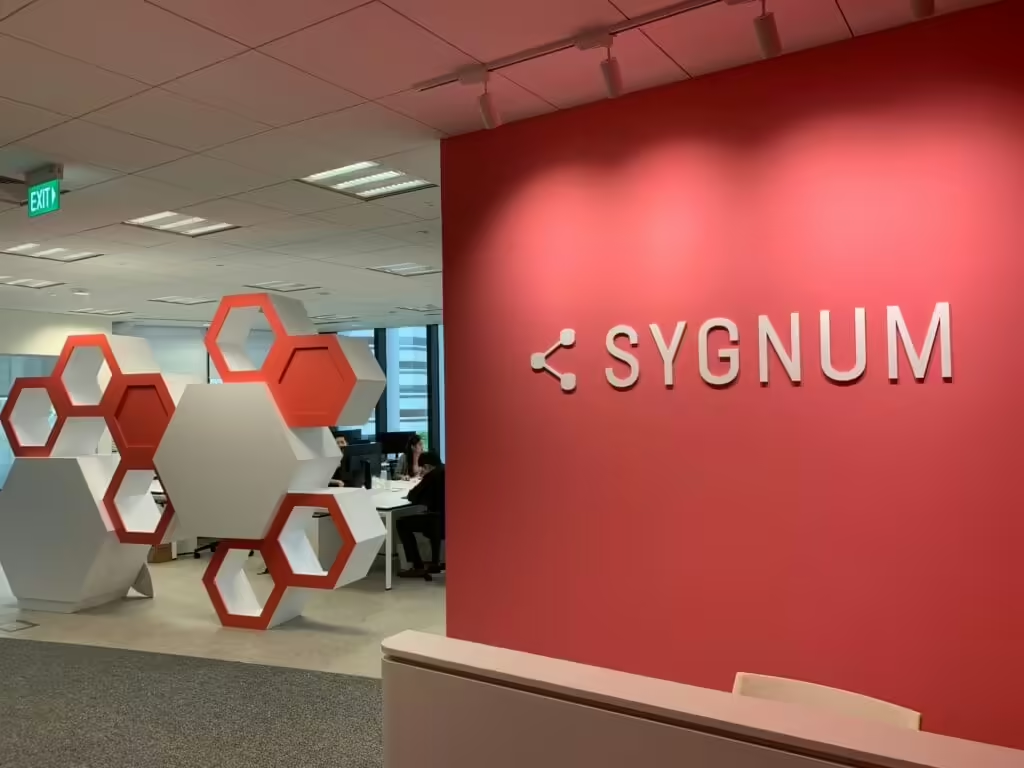In the rapidly evolving world of digital assets, the partnership between Chainlink, Fidelity International, and Sygnum stands as a testament to the transformative power of blockchain technology. By bringing the Net Asset Value (NAV) data of Fidelity’s $6.9 billion Institutional Liquidity Fund onto the blockchain, this collaboration promises to revolutionize the way traditional finance interacts with the digital realm.
The Significance of Net Asset Value (NAV)
NAV is a crucial financial metric that calculates the value of a fund’s assets minus its liabilities, divided by the number of outstanding shares. Traditionally, this data has been updated after each trading day, limiting the transparency and accessibility of this vital information. However, the partnership between Chainlink, Fidelity, and Sygnum aims to change this paradigm, making NAV data available in real-time and on-chain.
Real World Asset Tokenization Is The Next Hot Thing in Blockchain
The integration of NAV data onto the blockchain represents a significant step forward in the ongoing trend of asset tokenization. As Sergey Nazarov, the co-founder of Chainlink, aptly noted, “Fund tokenization is likely the largest digital asset trend happening today, and it is a large confirmation that global asset management firms are entering this growing market.” This partnership serves as a testament to the increasing adoption of blockchain technology by traditional financial institutions.
Related Read: RWA Tokenization Transforms the Life Insurance Landscape: Infineo’s $9M Policy Minting on Provenance Blockchain
Sygnum’s Role: Tokenizing Treasury Reserves

Sygnum, a digital asset bank, has played a pivotal role in this initiative by tokenizing $50 million from Matter Labs’ treasuries. This move aligns with Matter Labs’ strategy to shift its treasury reserves onto the blockchain while maintaining investments in short-term, high-quality debt securities, such as those provided by mutual funds like Fidelity’s Institutional Liquidity Fund.
Chainlink’s Expertise: Securing and Propagating NAV Data

Chainlink, the leading decentralized blockchain oracle network, has been instrumental in facilitating the secure and efficient transfer of NAV data onto the blockchain. Leveraging its “chain-agnostic approach,” Chainlink ensures that the NAV data can be seamlessly propagated across multiple blockchains and existing off-chain systems, providing real-time transparency and accessibility to Sygnum, its clients, and the broader market participants.
The DTCC’s Smart NAV Pilot: A Prelude to the Future
This partnership between Chainlink, Fidelity, and Sygnum builds upon the groundwork laid by the Depository Trust and Clearing Corporation (DTCC) Smart NAV industry pilot, which took place in May. The DTCC pilot explored the integration of fund NAV data onto a blockchain, utilizing Chainlink’s Cross-Chain Interoperability Protocol (CCIP) to enable real-time data access and automation, leading to significant enhancements in data management and operational efficiency.
Expanding the Scope: DTCC’s Vision for the Future
The DTCC has expressed its intention to potentially expand the scope of the Smart NAV pilot, exploring a “broader range of use cases” across a greater number of blockchains. This forward-looking approach underscores the industry’s recognition of the potential benefits that blockchain-based solutions can bring to the traditional finance landscape.
Unlocking New Opportunities: Tokenized Funds and Smart Contracts
The integration of NAV data onto the blockchain opens up a world of possibilities for the financial sector. As the DTCC pilot highlighted, the availability of structured data on-chain can facilitate the development of tokenized funds and “bulk consumer” smart contracts, which hold data for multiple funds. These innovations have the potential to streamline portfolio management, automate rebalancing workflows, and enhance overall operational efficiency.
By making NAV data readily accessible and verifiable on-chain, the Chainlink, Fidelity, and Sygnum partnership addresses a longstanding challenge in the traditional fund industry. Investors and market participants can now access this crucial information in real-time, enabling more informed decision-making and fostering greater transparency within the financial ecosystem.
Bridging Traditional Finance (TradFI) and Digital Assets
This collaboration represents a significant milestone in the convergence of traditional finance and the digital asset landscape. As Sergey Nazarov aptly observed, “fund tokenization is likely the largest digital asset trend happening today, and it is a large confirmation that global asset management firms are entering this growing market.” The integration of NAV data onto the blockchain serves as a tangible example of how the two worlds are becoming increasingly intertwined.
The Rise of Tokenized Private Debt
In addition to the tokenization of mutual funds, the partnership between Chainlink, Fidelity, and Sygnum also highlights the growing interest in tokenized private debt instruments. In October 2023, Sygnum partnered with Float and Fasanara Capital to release a new tokenized private debt instrument, which was launched on the Polygon blockchain. This trend underscores the broader appeal of tokenization, particularly in the private markets and the private debt sector.
Towards a More Efficient Financial Ecosystem
As the trend of fund tokenization continues to gain momentum, the partnership between Chainlink, Fidelity, and Sygnum sets a new standard for integrating traditional finance with blockchain technology. This collaboration paves the way for a more interconnected and efficient financial ecosystem, where key data points like NAV are readily available and seamlessly integrated across various platforms and systems.
Conclusion: A Future of Transparent and Accessible Finance
The groundbreaking partnership between Chainlink, Fidelity, and Sygnum represents a significant leap forward in the ongoing convergence of traditional finance and the digital asset landscape. By bringing NAV data onto the blockchain, this collaboration promises to enhance transparency, accessibility, and operational efficiency within the fund industry. As the trend of asset tokenization continues to gain momentum, this initiative serves as a blueprint for how global financial institutions can harness the power of blockchain technology to revolutionize the way they operate and serve their clients.













